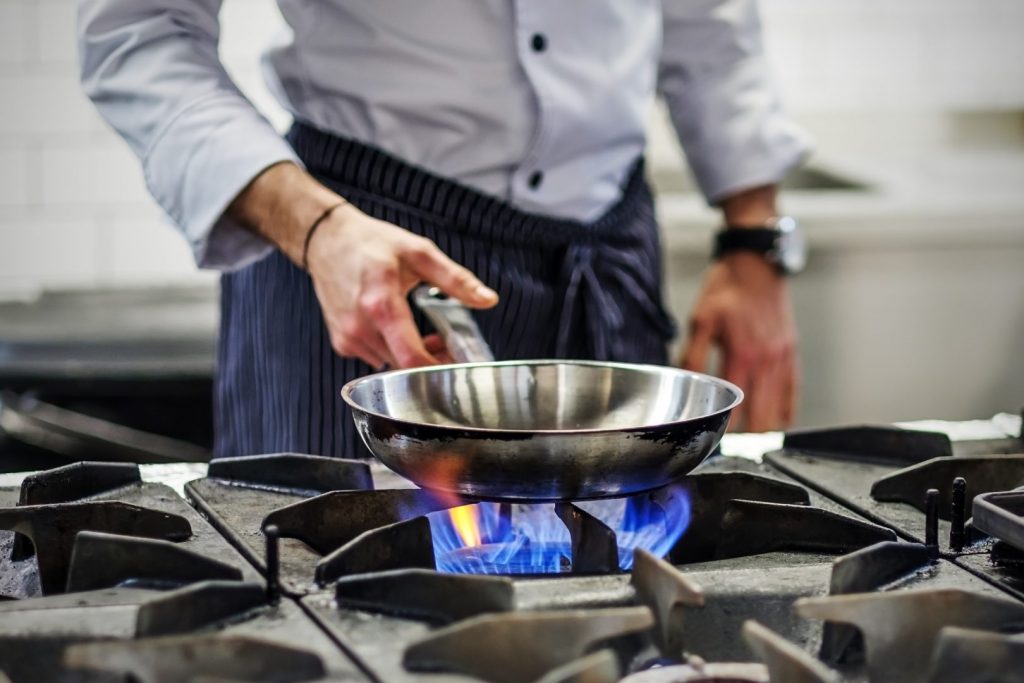
Reaching for a hot pan or skillet on an open flame without a hot pad, mitt, or other protection can lead to burn because there is no way to know how hot the pan or handle might be
This week (Monday, February 4-Sunday, February 10) is “National Burn Awareness Week.” As aging in place specialists and professionals, we understand the issue of safety in the home and how burns can be a contributing factor in how safe those homes remain. It’s not the homes themselves that are responsible for the accidents that happen within them as much as it is aspects of accessibility and layout within those homes, as well as how the occupants use and interact with their homes.
Burns, like falls, are very problematic and affect everyone in the home unless extreme diligence and precaution are practiced. Even at that, accidents can happen. Burns at the least are sore and maddening. At their most severe, they can have serious, even life-threatening consequences. To be sure, burns are something that we need to design around to avoid their occurrence whenever we can. At least we know some of the most common causes of burns in the home.
Burns can occur anywhere in the home something hot is touched, but they are the most common in the bathroom and the kitchen. They are painful and can cause a lack of mobility in a person’s arms and legs if those are what is burned. Burns on the neck and face are potentially something that can scar also.
The most common way a burn will occur is by touching something hot. Our hands will be affected this way. We also can bump into something hot with any part of our body or have something hot fall onto us or otherwise contact our skin without us attempting to reach for or grab it. We can also eat or swallow something hot such as a food or dessert (cooked meat or vegetable, a casserole, broth, gravy, fruit pie or cobbler), or a beverage (hot tea, coffee, or hot chocolate, for instance). Our tongue, the inside of our mouth, or our throat is going to be on the receiving end of those burns. Again, these burns can happen to anyone and can occur without any advance warning or notice. While eating or drinking something hot might give off a warning sign of steam, we have no way of knowing just how hot it might be until it has been put into our mouths. It’s too late now to avoid discomfort or injury.
Sometimes burns are going to occur because we touch or grab something hot that we did not expect to be warm at all or not as hot as it was. We might touch the inside of the oven door with our forearm while trying to attend to an item cooking in the oven. We could touch a cooktop burner without realizing that it was turned on or that it had recently been turned off and was still hot. We could try to pick up a pan, pot, oven dish, bowl, or other cooking vessels that had been in the microwave or oven without using a hot pad or mitt – or one that was too thin to offer proper protection from the heat. We also could be burned by escaping steam from that cooking item when we attempted to retrieve it or raised the lid to check on it.
Then, there is the possibility of touching a hot item such as a heating radiator, space heater, muffler on a motor, the base of a small appliance after it has been used. Electric shock is another way burns can happen so we need to make sure that the wiring in our homes is in good condition and that all wet areas of the home (kitchen, bathrooms, laundry areas, and other areas where running water is present – inside the home or outside) have a ground fault circuit interrupter protection outlet (GFCI) and breaker and that the other circuits in the home are protected by arc fault circuit interrupters (AFCI). Electricity can deliver a lot of heat. Lightning (an extreme natural form of electricity) can as well so well need to use caution when thunderstorms are occurring – avoiding taking a shower, washing our hands, or being outside, for instance).
Whether in the kitchen or bathroom, hot water – especially unregulated sudden surges of hot water – can startle us, redden our skin, and potentially cause more than just discomfort, depending on how hot the water actually is. Adjust ing the hot water heater to a lower setting or installing a thermostatic valve are ways to avert unexpected hot water surprises. Instant hot water dispensers that are found in some kitchen for use in cooking or preparing an instant hot beverage must be used with caution as well, and children should not be allowed near them.
Safety and comfort are two hallmarks of aging in place that avoiding and preventing burns will facilitate. We want our own homes as well as those of our clients to be injury free from burns and the resulting discomfort and healing time they cause. We have to ever-vigilent to guard for this.
